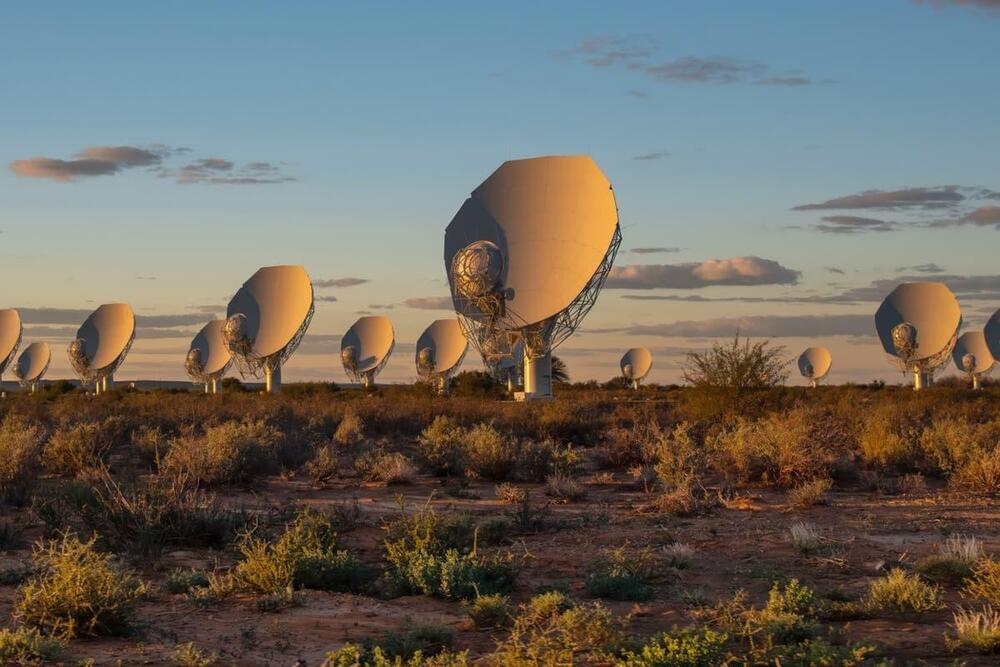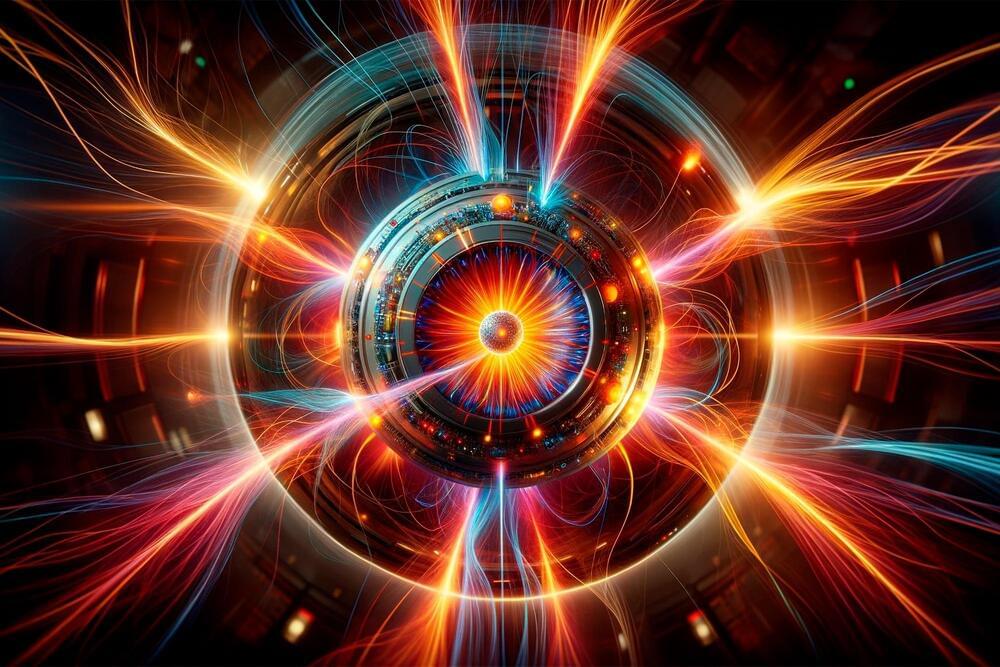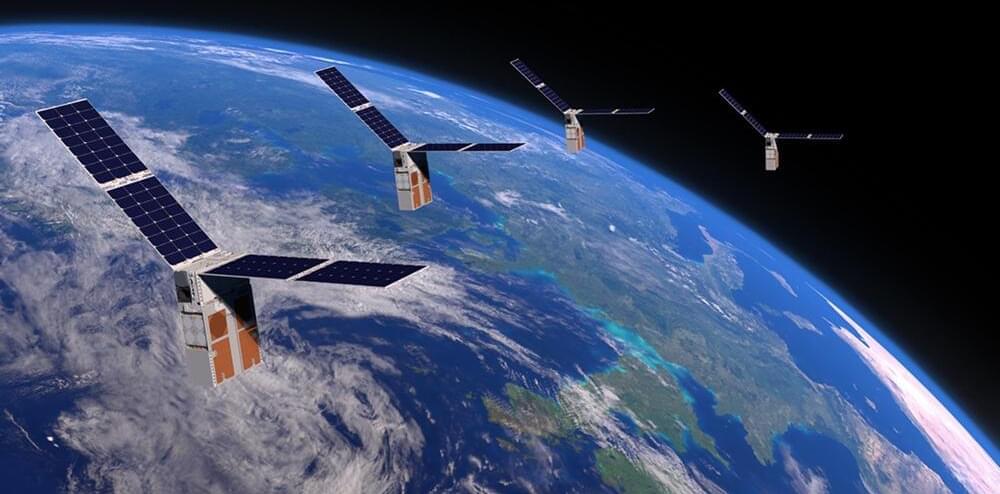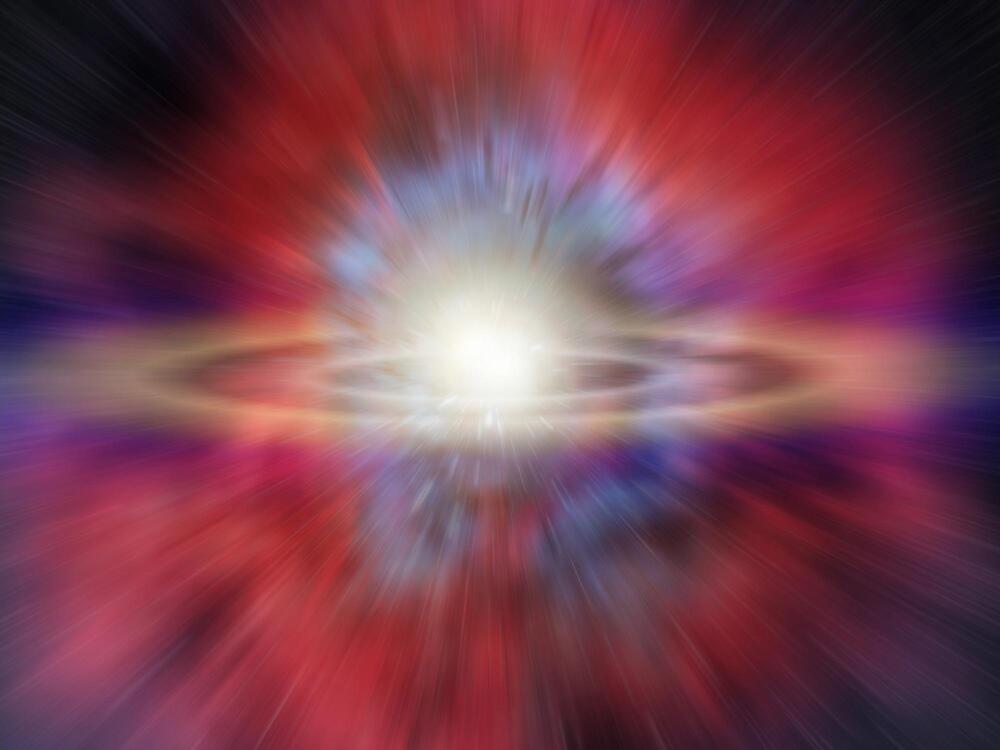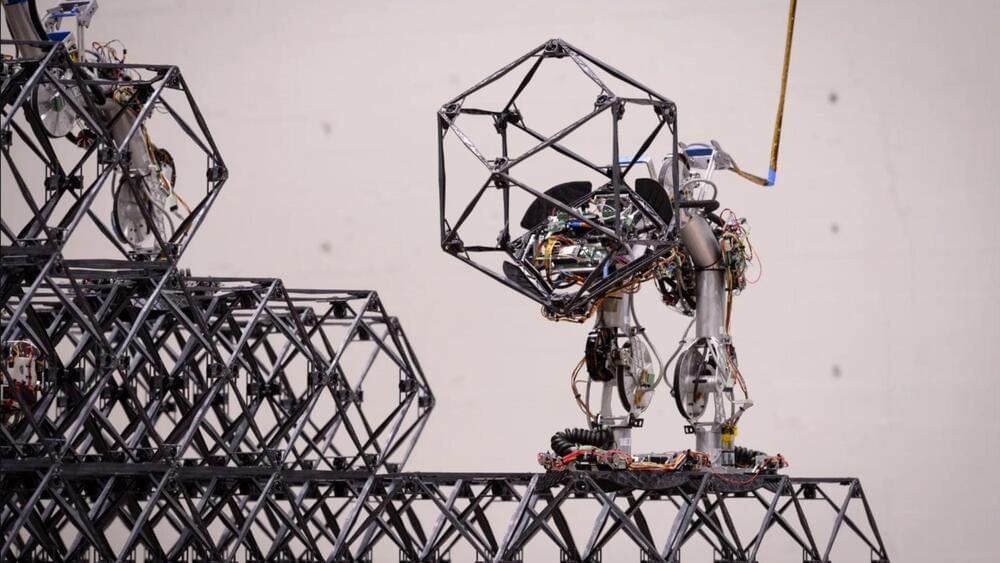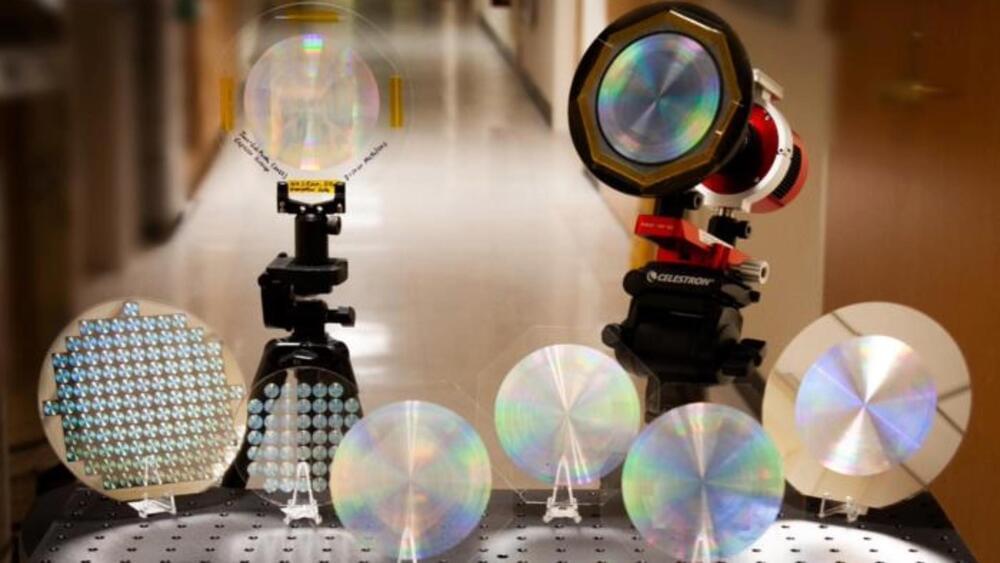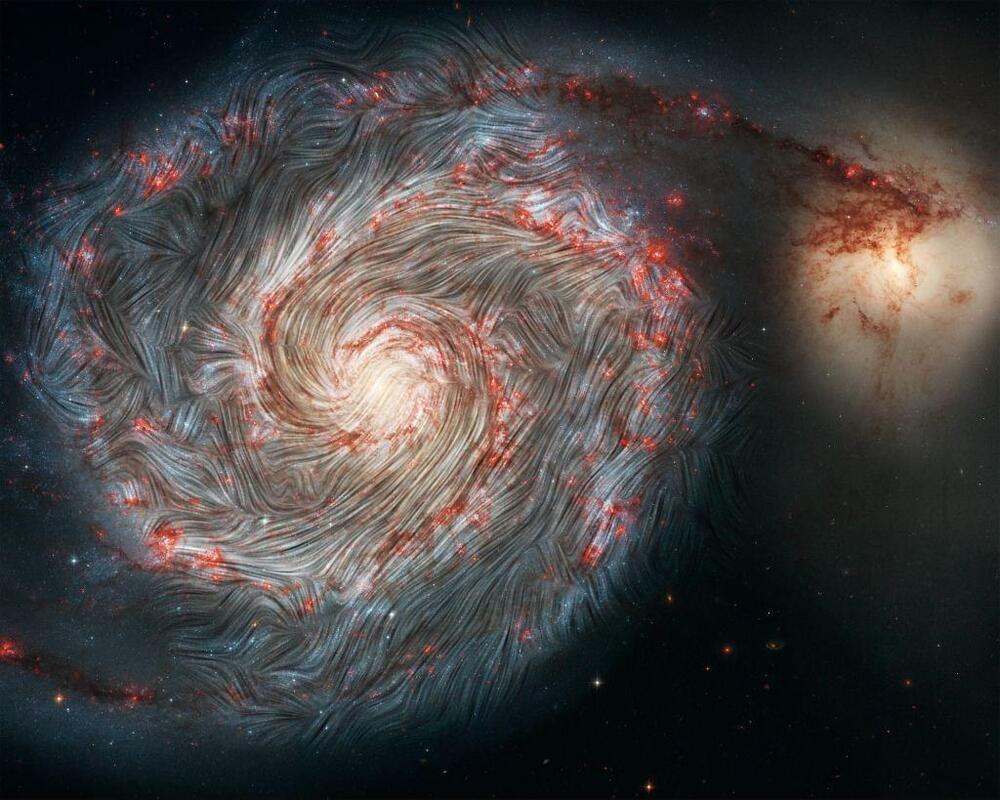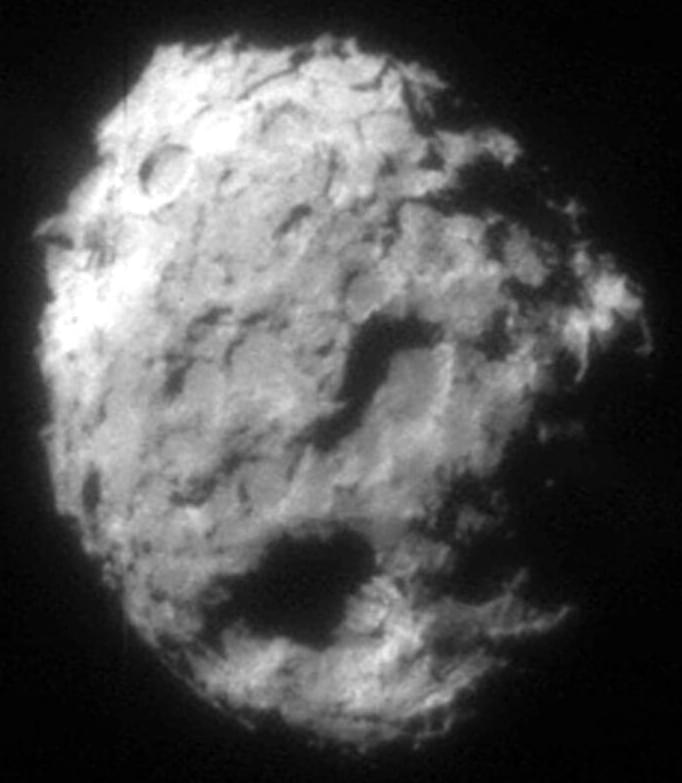Archive for the ‘space’ category: Page 95
Jan 18, 2024
Fusion Research Advances: New Views on Energetic Ion Flow
Posted by Saúl Morales Rodriguéz in categories: computing, nuclear energy, space
New observations at the DIII-D National Fusion Facility offer vital insights into energetic ions in fusion plasmas, key for fusion power development and space plasma understanding, with implications for satellite technology.
In a burning plasma, maintaining confinement of fusion-produced energetic ions is essential to producing energy. These fusion plasmas host a wide array of electromagnetic waves that can push energetic ions out of the plasma. This reduces the heating of the plasma from fusion reaction products and ends the burning plasma state.
Recent measurements at the DIII-D National Fusion Facility provide the first direct observations of energetic ions moving through space and energy in a tokamak. Researchers combined these measurements with advanced computer models of electromagnetic waves and how they interact with energetic ions. The results provide an improved understanding of the interplay between plasma waves and energetic ions in fusion plasmas.
Jan 18, 2024
StarFOX Experiment: NASA’s Starling CubeSats Succeed in Autonomous Navigation Test
Posted by Saúl Morales Rodriguéz in categories: robotics/AI, space
NASA’s Starling mission will test new technologies for autonomous swarm navigation on four CubeSats in low-Earth orbit. Credit: Blue Canyon Technologies/NASA
NASA ’s Starling mission successfully tested autonomous navigation in space using “star tracker” sensors, paving the way for more accurate orbital predictions in the StarFOX experiment.
NASA’s Starling mission accomplished a significant objective for the StarFOX (Starling Formation-Flying Optical Experiment) experiment, a test of autonomous navigation, co-location, and situational awareness in space.
Jan 18, 2024
The Iron-60 Enigma: Decoding Cosmic Explosions on Earth
Posted by Saúl Morales Rodriguéz in categories: biological, climatology, particle physics, space
When large stars or celestial bodies explode near Earth, their debris can reach our solar system. Evidence of these cosmic events is found on Earth and the Moon, detectable through accelerator mass spectrometry (AMS). An overview of this exciting research was recently published in the scientific journal Annual Review of Nuclear and Particle Science by Prof. Anton Wallner of the Helmholtz-Zentrum Dresden-Rossendorf (HZDR), who soon plans to decisively advance this promising branch of research with the new, ultrasensitive AMS facility “HAMSTER.”
In their paper, HZDR physicist Anton Wallner and colleague Prof. Brian D. Fields from the University of Illinois in Urbana, USA, provide an overview of near-Earth cosmic explosions with a particular focus on events that occurred three and, respectively, seven million years ago.
“Fortunately, these events were still far enough away, so they probably did not significantly impact the Earth’s climate or have major effects on the biosphere. However, things get really uncomfortable when cosmic explosions occur at a distance of 30 light-years or less,” Wallner explains. Converted into the astrophysical unit parsec, this corresponds to less than eight to ten parsecs.
Jan 18, 2024
Towards the Omega Singularity: An Argument for Our Teleological Evolution
Posted by Alex Vikoulov in categories: robotics/AI, singularity, space

If we embrace the idea that consciousness is the fundamental fabric of the universe, our exploration of technology, particularly in the realms of artificial intelligence and virtual realities, takes on new significance.
The concept of teleological evolution, driven by a purpose or end goal, posits that the universe is not just a random assembly of matter and energy, but rather a carefully orchestrated symphony of consciousness.
Continue reading “Towards the Omega Singularity: An Argument for Our Teleological Evolution” »
Jan 18, 2024
NASA crafts inchworm-like robot systems for future deep-space missions
Posted by Gemechu Taye in categories: robotics/AI, space
NASA’s ARMADAS team revolutionizes space construction! Inchworm-like robots autonomously build structures using digital assembly systems.
Jan 18, 2024
Caltech’s space solar power project completes inaugural space mission
Posted by Gemechu Taye in categories: solar power, space, sustainability
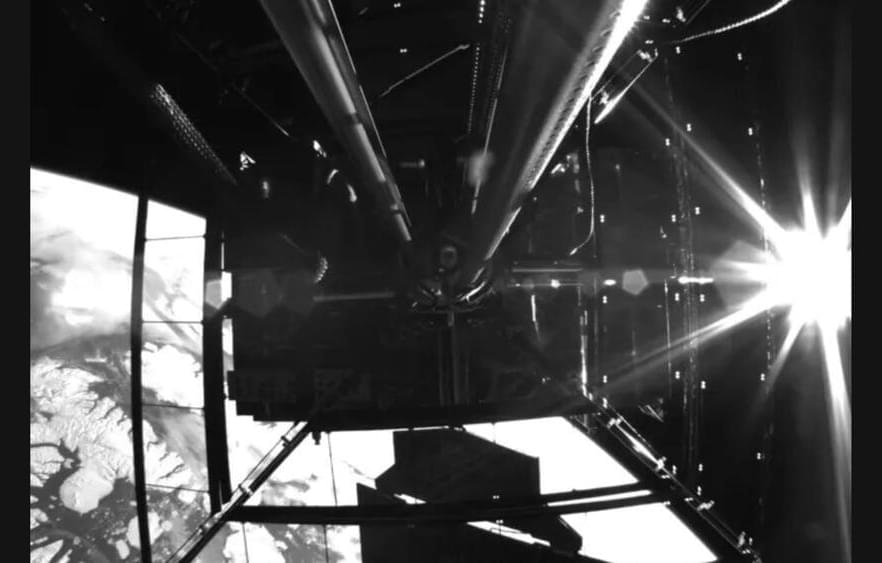
Caltech’s Space Solar Power Demonstrator (SSPD-1) was launched into space one year ago.
After nearly a year in orbit, Caltech’s Space Solar Power Demonstrator (SSPD-1) reached its end of mission.
Jan 18, 2024
First 10-cm glass metalens promises stunning views of Sun, Moon, cosmos
Posted by Jeremy Dylan Batterson in categories: innovation, space
10 Centimeter Diameter metalens for astronomy.
A newly-developed “metalens” has showcased promise in capturing high-resolution images of celestial bodies like our Sun, Moon, and even some distant objects.
The Harvard John A. Paulson School of Engineering and Applied Sciences (SEAS) created the first all-glass metalens, which has a diameter of only 10 cm.
Continue reading “First 10-cm glass metalens promises stunning views of Sun, Moon, cosmos” »
Jan 18, 2024
Astronomers Have Mapped the Milky Way’s Magnetic Fields in 3D
Posted by Genevieve Klien in categories: mapping, space
Researchers have developed the first 3D maps of magnetic field structures within a spiral arm of the Milky Way. While we’ve seen smaller-scale magnetic fields before, this is much larger, showing the overall magnetic pattern in our galaxy. These fields are incredibly weak, about 100,000 times weaker than the Earth’s magnetic field, but they impact the galaxy, strongly influencing star-forming regions.
Jan 17, 2024
NASA’s Stardust Mission Samples Reveals New Secrets of Comet 81P/Wild 2 Comet
Posted by Laurence Tognetti, Labroots Inc. in categories: materials, space
“The Stardust samples, microscopic grains from a body less than two miles wide, contain a record of the deep past covering billions of miles,” said Dr. Ryan Ogliore. “After 18 years of interrogating this comet, we have a much better view of the solar system’s dynamic formative years.”
What can samples collected from a comet almost 20 years ago tell us about the history of comets and our solar system? This is what a recent study published in Geochemistry hopes to address as a researcher from the Washington University in St. Louis (WUSTL) analyzed samples from Comet 81P/Wild 2 that were returned to Earth almost exactly 18 years ago today. This study holds the potential to help scientists not only gain greater insights into the origin and history of comets, but of our solar system, as well.
Image of the Stardust sample return capsule being retrieved inside a protective covering after it was collected from its landing site at the U.S. Air Force Utah Test and Training Range in January 2006. (Credit: NASA)
Continue reading “NASA’s Stardust Mission Samples Reveals New Secrets of Comet 81P/Wild 2 Comet” »
